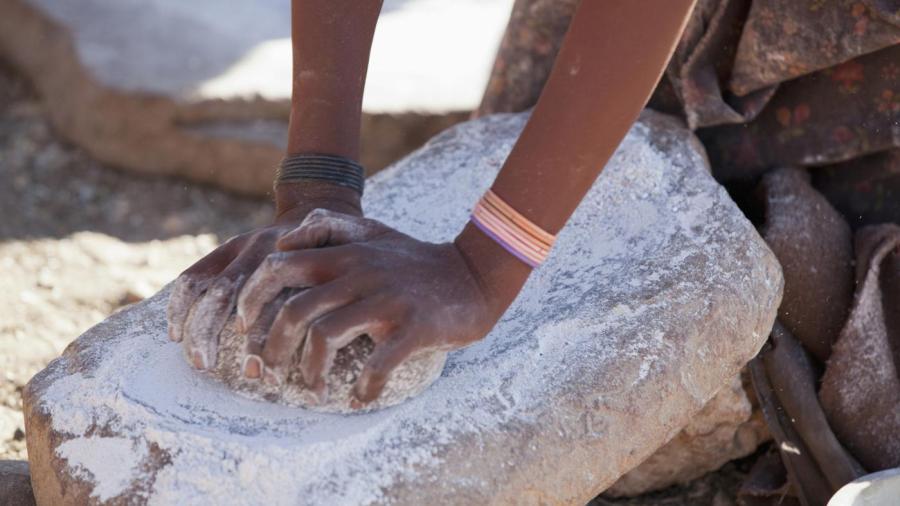Where Did Flour Originate?

Flour is believed to have been produced for the first time during the Mesolithic or Neolithic Eras in the Middle East. The earliest forms of flour were made by grinding grass or wheat seeds between two stones.
At the dawn of agriculture, about 11,000 B.C., ancient nomads began creating settlements and became farmers. Evidence of tools used as sickles has been discovered; the tools have notches on the blades that are believed to have resulted from cutting grass. Since the seeds from grass and wheat are indigestible, it is likely that the discovery of flour came as a way to create an edible product from them.
The development of edible flour was dependent on the invention of the grinding stone. Popular consensus among historians and archaeologists maintains that around 6,000 B.C., simple millstones were first used to grind seeds. This was probably a very labor-intensive task that was performed by women. Studies of ancient female skeletons reveal injuries and deformities thought to be caused by long periods of time kneeling at a millstone. Later, the Romans built large grinding mills, or cone mills, that were powered by animals or slaves to reduce corn to powder. The development of windmills and water wheels during the Middle Ages made flour production an automated process. Modern methods of grinding flour were discovered during the Industrial Age, when grinding was first powered by steam, then by electricity.





